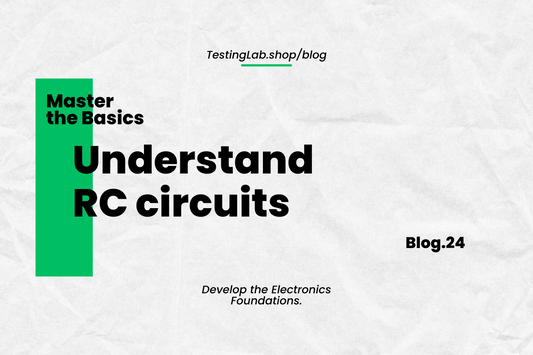Updates
View all-
How to Use Your Fluke 101 Multimeter to Test Fr...
Learn how to measure frequency using the Fluke 101 multimeter.This quick guide shows you how to safely check AC frequency (Hz) in outlets or electrical systems, with step-by-step instructions tailored...
How to Use Your Fluke 101 Multimeter to Test Fr...
Learn how to measure frequency using the Fluke 101 multimeter.This quick guide shows you how to safely check AC frequency (Hz) in outlets or electrical systems, with step-by-step instructions tailored...
-
How to Use the Fluke 101 Multimeter to Test Con...
Learn how to test continuity using the Fluke 101 multimeter.This step-by-step guide shows you how to check wires, switches, and fuses to ensure electrical connections are intact—perfect for beginners and...
How to Use the Fluke 101 Multimeter to Test Con...
Learn how to test continuity using the Fluke 101 multimeter.This step-by-step guide shows you how to check wires, switches, and fuses to ensure electrical connections are intact—perfect for beginners and...
-
What Is the Best Tool for Testing AC Current?
Not all multimeters can measure AC current—so what’s the best tool for the job?In this guide, we explain the difference between AC voltage and current, why the Fluke 101 can’t...
What Is the Best Tool for Testing AC Current?
Not all multimeters can measure AC current—so what’s the best tool for the job?In this guide, we explain the difference between AC voltage and current, why the Fluke 101 can’t...
Tutorial
Master the Basics: How to Measure AC Voltage
Measuring AC voltage is a crucial skill for anyone working with electronics or electrical systems. This guide explains how to safely use a digital multimeter (DMM) to measure AC voltage,...
Master the Basics: How to Measure AC Voltage
Measuring AC voltage is a crucial skill for anyone working with electronics or electrical systems. This guide explains how to safely use a digital multimeter (DMM) to measure AC voltage,...
Master the Basics: Sine Wave Characteristics
Sine waves are fundamental to AC signals and play a key role in electronics and power systems. This post explains the three main characteristics of sine waves—amplitude, frequency, and phase—and...
Master the Basics: Sine Wave Characteristics
Sine waves are fundamental to AC signals and play a key role in electronics and power systems. This post explains the three main characteristics of sine waves—amplitude, frequency, and phase—and...
Master the Basics: Alternating Current vs. Dire...
What’s the difference between Alternating Current (AC) and Direct Current (DC)? DC flows in one direction (like batteries), while AC switches direction (like wall outlets). AC is ideal for long-distance...
Master the Basics: Alternating Current vs. Dire...
What’s the difference between Alternating Current (AC) and Direct Current (DC)? DC flows in one direction (like batteries), while AC switches direction (like wall outlets). AC is ideal for long-distance...

Master the Basics: Understand RC circuits
RC circuits, composed of resistors and capacitors, play a crucial role in electronics. This blog explains how capacitors charge and discharge over time, how the time constant (τ) determines speed,...
Master the Basics: Understand RC circuits
RC circuits, composed of resistors and capacitors, play a crucial role in electronics. This blog explains how capacitors charge and discharge over time, how the time constant (τ) determines speed,...
Master the Basics: Capacitors in Series
Learn the basics of capacitors in series and how they affect your circuits. In this post, we explain how to calculate the total capacitance, why capacitors in series have less...
Master the Basics: Capacitors in Series
Learn the basics of capacitors in series and how they affect your circuits. In this post, we explain how to calculate the total capacitance, why capacitors in series have less...
Master the Basics: Understanding Capacitors in ...
When capacitors are connected in parallel, their capacitance adds up, making it easy to create custom values using available components. However, the voltage rating remains limited by the lowest-rated capacitor...
Master the Basics: Understanding Capacitors in ...
When capacitors are connected in parallel, their capacitance adds up, making it easy to create custom values using available components. However, the voltage rating remains limited by the lowest-rated capacitor...